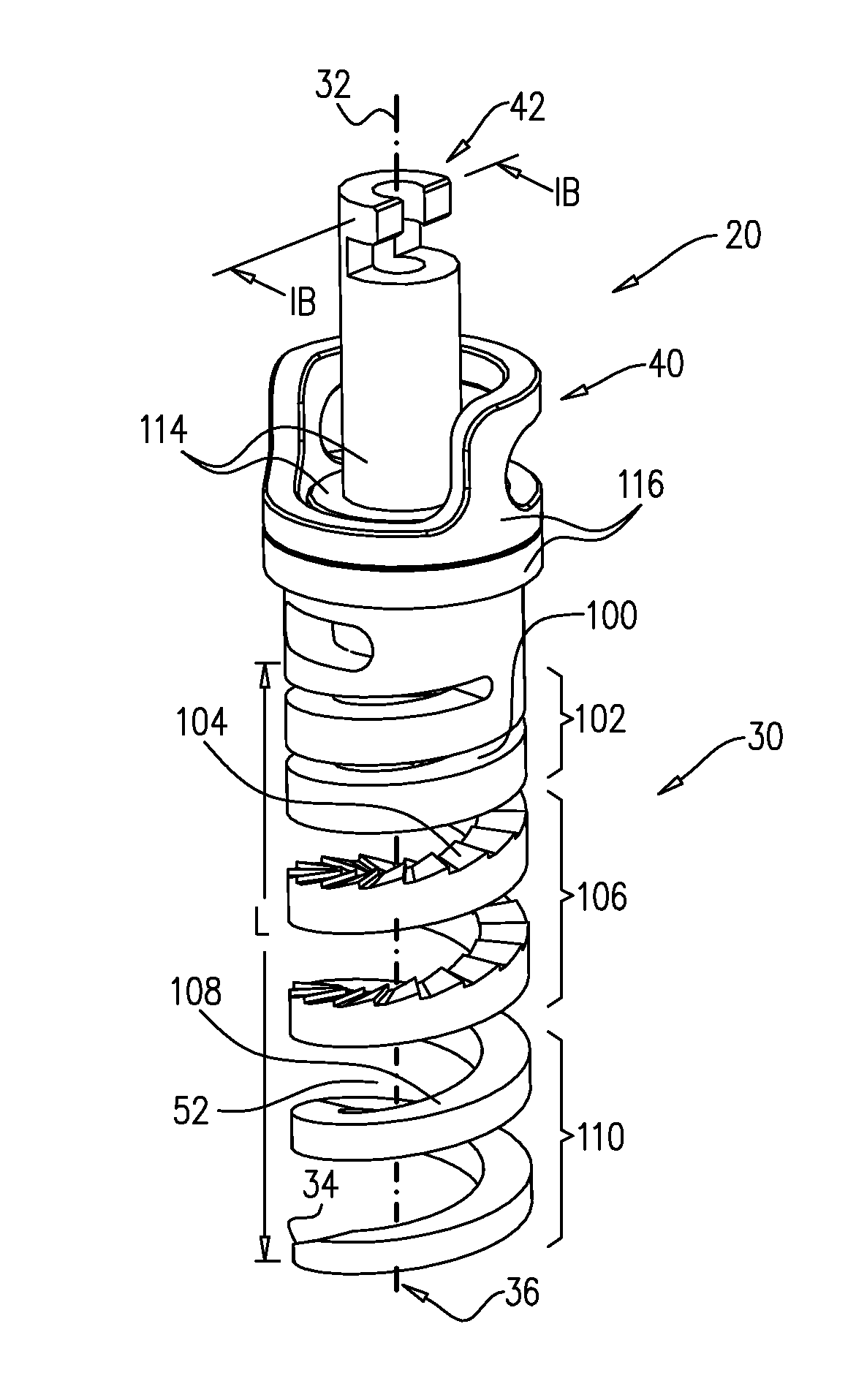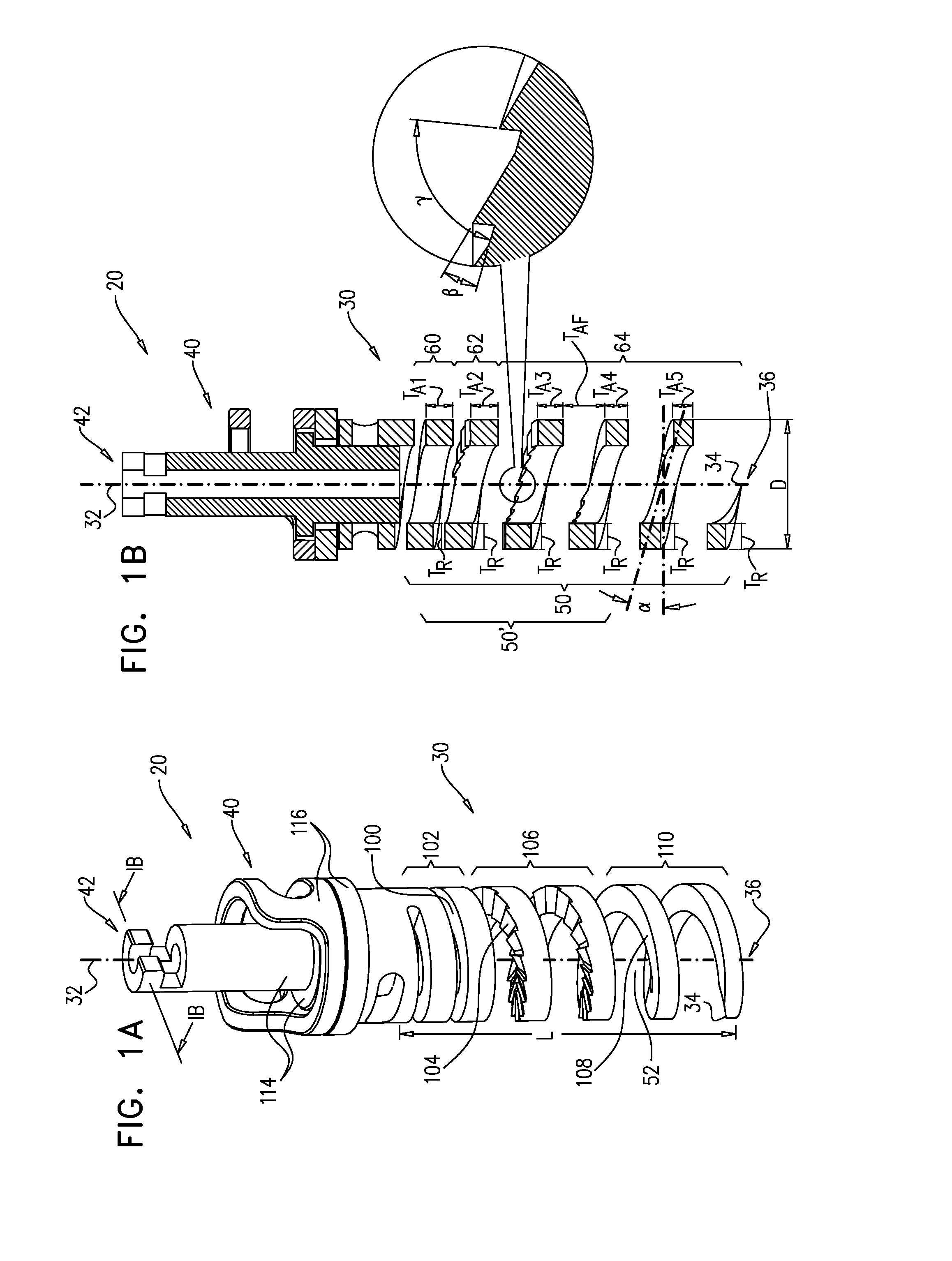Soft tissue anchors and implantation techniques
a soft tissue anchor and anchor technology, applied in the field of soft tissue anchors, can solve the problems of excess force applied to the anchor, failure elsewhere on the anchor, etc., and achieve the effects of reducing or eliminating the danger of unscrewing the anchor, breaking the anchor, or tearing the tissue, and reducing or eliminating the danger of increasing the tension
- Summary
- Abstract
- Description
- Claims
- Application Information
AI Technical Summary
Benefits of technology
Problems solved by technology
Method used
Image
Examples
Embodiment Construction
[0237]FIGS. 1A-B are schematic illustrations of a tissue anchor 20, in accordance with an application of the present invention. FIG. 1A is an isometric view of the anchor, and FIG. 1B is a cross-sectional view taken along line IB-IB of FIG. 1A. Tissue anchor 20 comprises a generally helical tissue-coupling element 30 disposed about a longitudinal axis 32 thereof and having a distal tissue-penetrating tip 34 at a distal end 36 of tissue anchor 20. Typically, tissue anchor 20 is shaped so as to define a head 40 at a proximal end 42 thereof. Typically, tissue-coupling element 30 has a generally rectangular, e.g., square, cross section.
[0238]For some applications, along at least a shaftless helical portion 50 of helical tissue-coupling element 30, an axial thickness TA of the helical tissue-coupling element varies while a radial thickness TR of the helical tissue-coupling element remains constant. Axial thickness TA is measured along axis 32, and radial thickness TR is measured perpendi...
PUM
 Login to View More
Login to View More Abstract
Description
Claims
Application Information
 Login to View More
Login to View More - R&D
- Intellectual Property
- Life Sciences
- Materials
- Tech Scout
- Unparalleled Data Quality
- Higher Quality Content
- 60% Fewer Hallucinations
Browse by: Latest US Patents, China's latest patents, Technical Efficacy Thesaurus, Application Domain, Technology Topic, Popular Technical Reports.
© 2025 PatSnap. All rights reserved.Legal|Privacy policy|Modern Slavery Act Transparency Statement|Sitemap|About US| Contact US: help@patsnap.com



